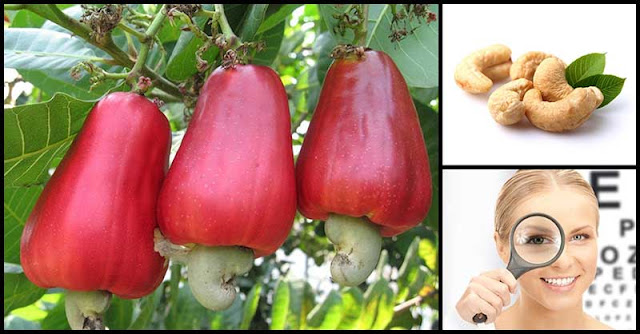Cashew nuts are kidney-shaped seeds that are found at the bottom of the cashew apple, the fruit of the cashew tree. This kind of nut has a soft consistency and sweet flavor. At present, cashew nuts are sold both raw or roasted and salted or unsalted.
An ounce of cashew nuts contains that following:
- Calories – 157
- Total Fat – 12.43 g
- Fiber – 0.9 g
- Carbohydrate – 8.56 g
- Sugar – 1.68 g
- Protein – 5.17 g
- Phosphorus – 168 mg
- Potassium – 187 mg
- Sodium – 3 mg
- Calcium – 10 mg
- Iron – 1.89 mg
- Magnesium – 83 mg
- Zinc – 1.64 mg
How Do Cashew Nuts Benefit Our Eye Health?
Light damage is considered to be a very destructive element to our eyes because of its array of unfiltered particles which if not managed powerfully enough will damage the eyes. Cashew nut consumption is one way of maintaining good eyesight in order to prevent the disintegration of the power of eyes which are a very delicate part of the body and are critical to overall happiness and well-being.
Cashews contain high levels of lutein and zeaxanthin which are both powerful antioxidant pigments. These two affect the eyes in a very enriching manner. Zeaxanthin is readily and directly absorbed by our retina and then forms a protective layer over our retina which helps in UV filtering and shielding. These help by making the eyes more resistant in its natural actions which can be described in better terms as improved defense and strength. Meanwhile, lutein also functions as a light filter, protecting the eye tissues from too much sunlight, especially from high-energy light rays called blue light.
When consumed daily, these two antioxidants can help protect the eye from damage, lower our risk from age-related macular degeneration, protect the eyes from the formation of cataracts which can be deadly for the eyes, and maintains eye health.
Moreover, Lutein and zeaxanthin appear to have important antioxidant functions in our bodies. They also guard the body against the damaging effects of free radicals, which are unstable molecules that can destroy cells and play a role in many diseases.
According to the U.S. Department of Agriculture (USDA), some of the best natural sources of lutein and zeaxanthin are green leafy vegetables and other green or yellow vegetables such as cooked kale and cooked spinach









